Gemini 1968
A project mounted in collaboration with engineer Nick Nealson in the form of scale models of two structures, accompanied by incorporating a pattern of sensors and outputs (light and movement) - integrated by a logic circuit.

Photomontage

Drawn installation plan, ink on tracing paper.
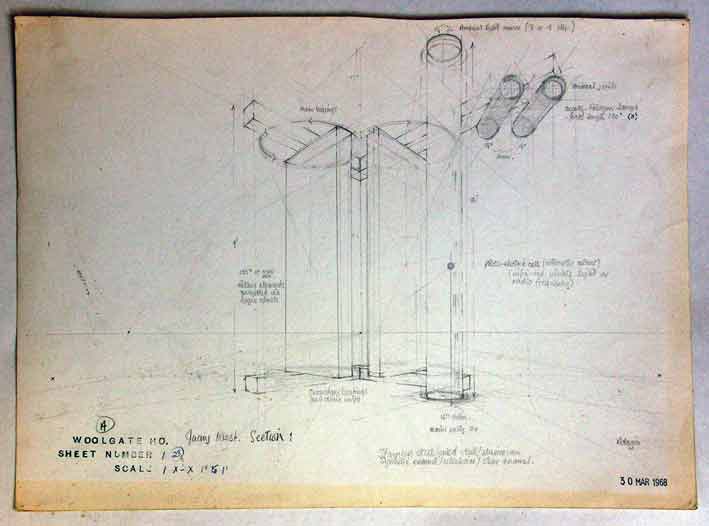
Perspective drawing of the western structure
Note on the project. I entered a competition for two architectural sculpture commissions in the City of London in early 1968 and had a kind of epiphany. The experience (described in Cornock, 2010) caused me to consider the site through the eyes of those who spent their lives working in this business district. The experience was also a strong one. So, at the age of 29, and with London and Paris exhibitions being finalised, I abandoned sculpture and devoted my energies to the development of a radically new kind of artwork - one that would invite engagement and interaction. These works, which we began in 1970 to refer to as ‘interactive art systems’, were not being made for members of the art world; they were structures with behaviour that would invite pedestrians into a form of ‘conversation’. The big challenge was to make that conversation’ rich enough to sustain the interest of locals over the working year. (A summary description is given of five of the systems in Cornock, 2010, and the work is documented in the Birkbeck study White Heat Cold Logic, and in Catherine Mason’s book A Computer in the Art Room.
We also mounted symposia and concerts, and began to develop a theoretical model of this creative conversation. Ref.)
Datapack 1969
Computer-managed interactive art system realized using both Honywell and GEIS equipment (with Ernest Edmonds).
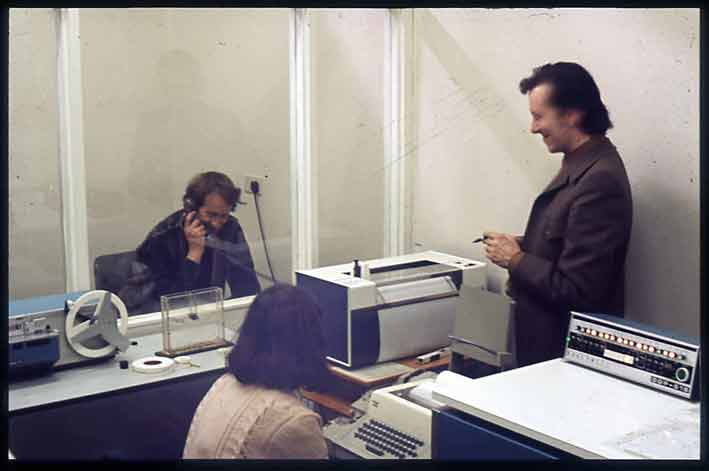
Computer graphics laboratory at Leicester Polytechnic, early 1970, showing SC receiving telephone inputs from Jennifer Bougourd in London which are being input to Honeywell DDP516. Standing: Ernest Edmonds.
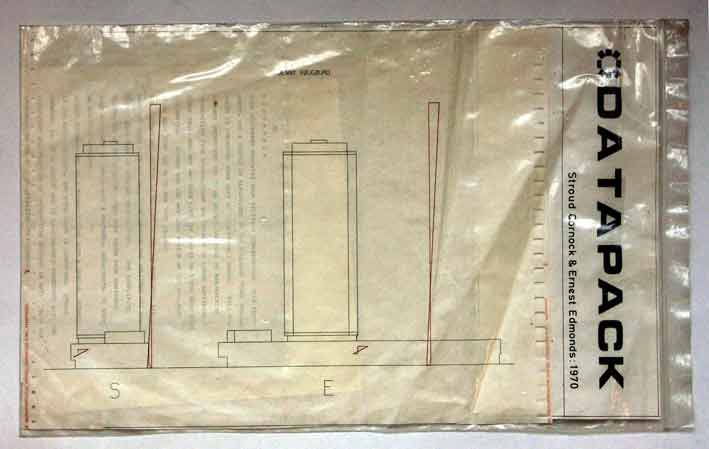
Example of a Datapack (1970), ink on drumplot paper, teletype printout, polyethylene bag. Collection of Jennifer Bougourd.
Interplay, 1969
A team was formed to generate and carry out this project for an environmental and computer-managed scheme for adult creative participation. Interplay was exhibited at the British Council in London where it was selected as Britain's entry to the VI Paris Beinnale at the Musée de l'Art Moderne. The core members of the team were Stroud Cornock, Bradley Faine, Nick Nealson, David Wood and Michael Brackenbury.
Structural model, electronic simulator, printed storyboards.
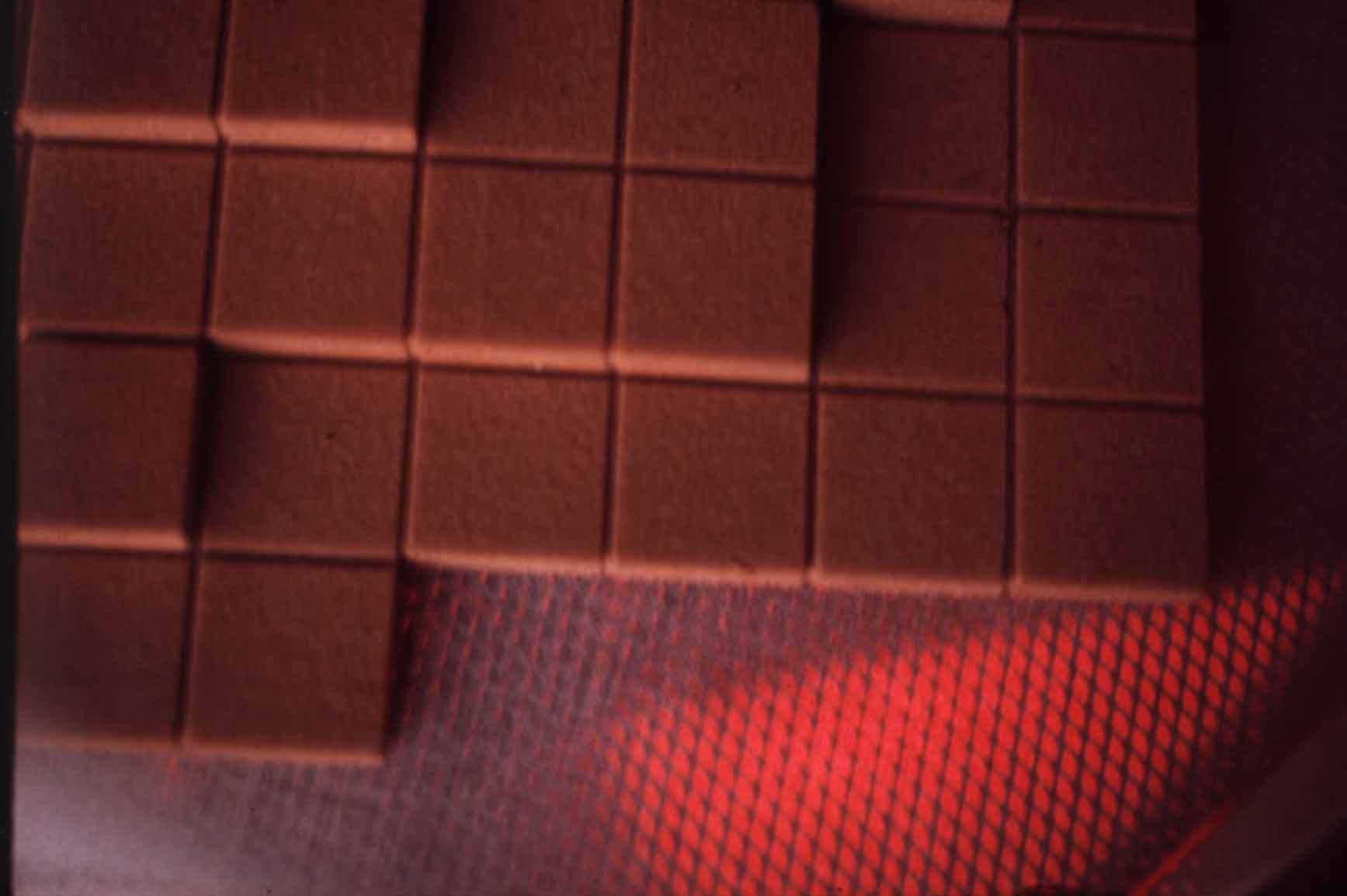
Simulator (detail of Interplay floor and illumination from double-skinned expanded dodecahedron panels), vacuum-formed PVC, rigid foam, bronze mesh.
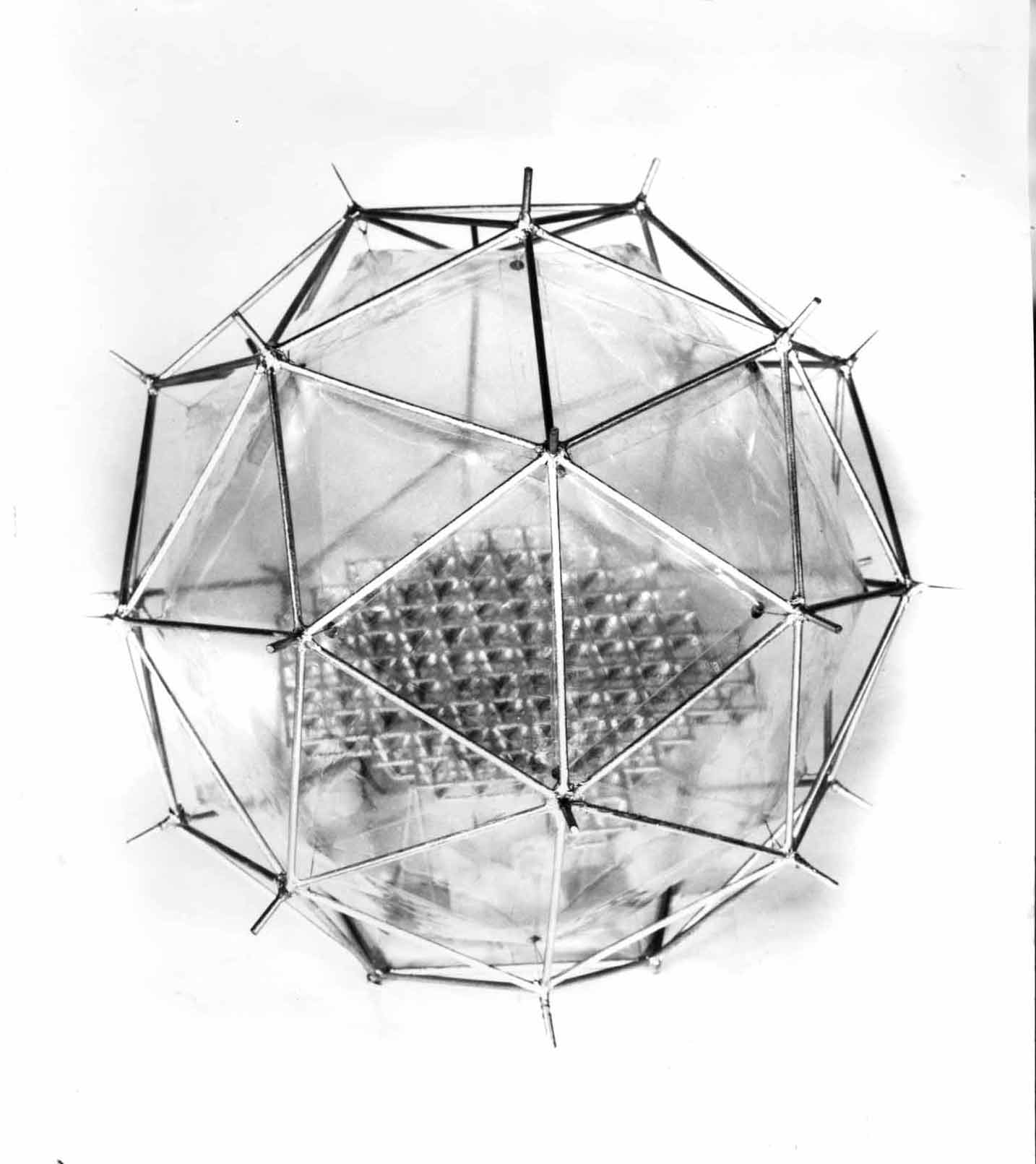
Structural model by architectural group within the Interplay team, led by Michael Brackenbury. Metal, plastic.

Simulator and printed storyboards presenign Interplay, as exhibited in Leicester, London and Paris.
Machina Ludens 1971
A second project for an environmental and computer-managed scheme for adult creative participation. Structural model, simulator, printed storyboards.
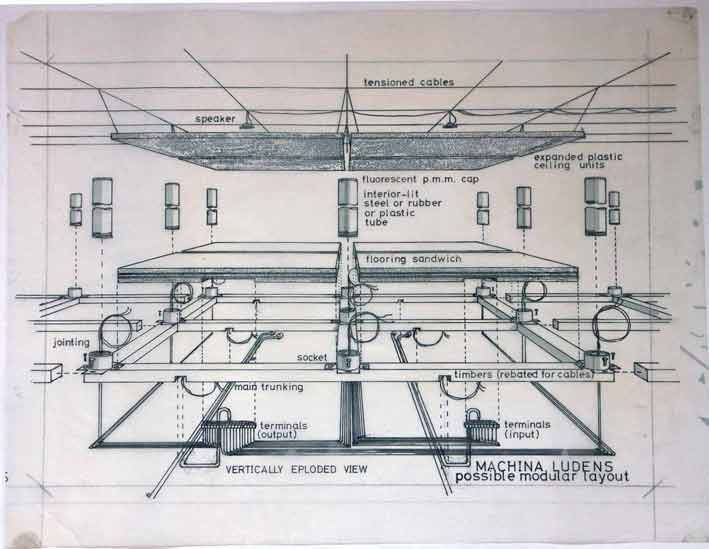
Structural drawing in which the components above and below floor level have been exploded and those between floor and ceiling have been truncated.
Labyrinth, 1971
In 1971 the Midland Arts Group hosted an interactive project for the Nottingham Festival. Ralph Selby conceived the show in the form of a maze to occupy the Midland Group Gallery; he formed a group of artists that included myself. This project, which was both sensational and successful. Commissioned for the Nottingham Festival and managed by the Midland Arts Group, this was a runaway public attraction, involving immersion in a mirrored maze on two floors. Visitors who explored the space using what became known as ‘suss packs’ encountered endlessly multiplying reflections, roving spheres and the husk of an artist.
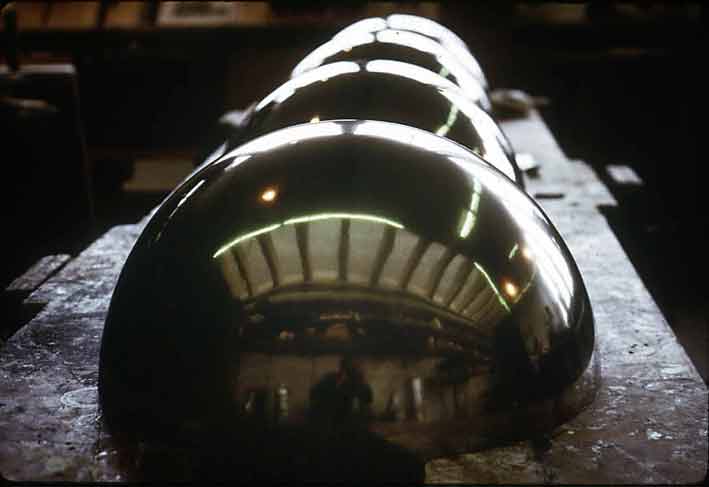
Mirrored sphere components ready for assembly.

Ralph Selby in the magical and dazzling mirror maze. Flash photography.

Stroud with the 'SusPack': the only illumination within the Labyrinth was from these packs, whose lamps were controlled by a mercury switch, while an induction coil picked up one of the sound channels emanating from vertical poles. The mercury switch was sensitive enough to pick up the heartbeat of the wearer of the substantial power pack slung around the shoulders. Flash photography.
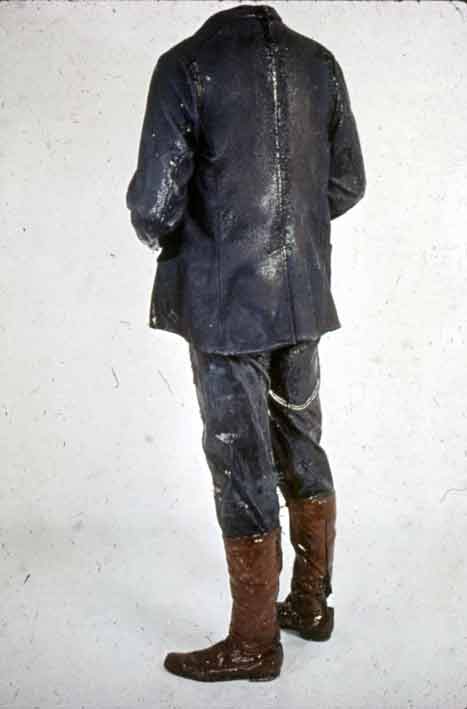
Husk - the lifelike husk of Peter Smailes, which inhabited the maze.
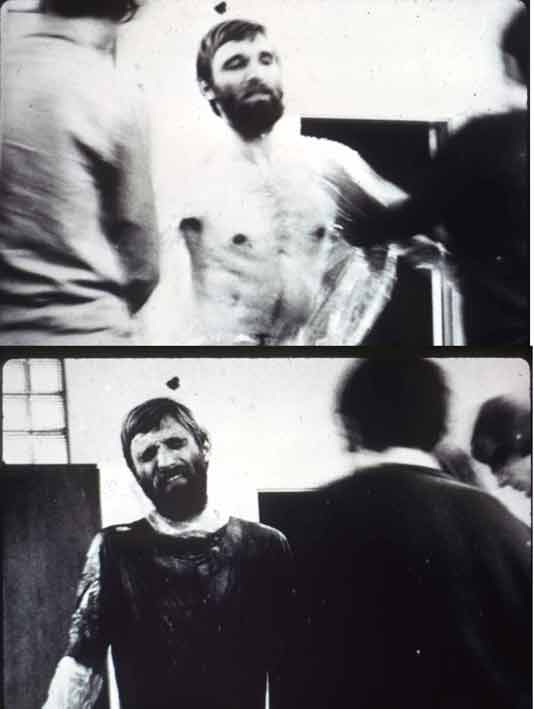
Peter Smailes, a member of the team, is (somewhat) protected with polythene sheet during the making of the ‘husk’. Smailes being dressed in his own, polyester resin-drenched, clothes which, when hardened and cut away from Peter, formed the ‘husk’.
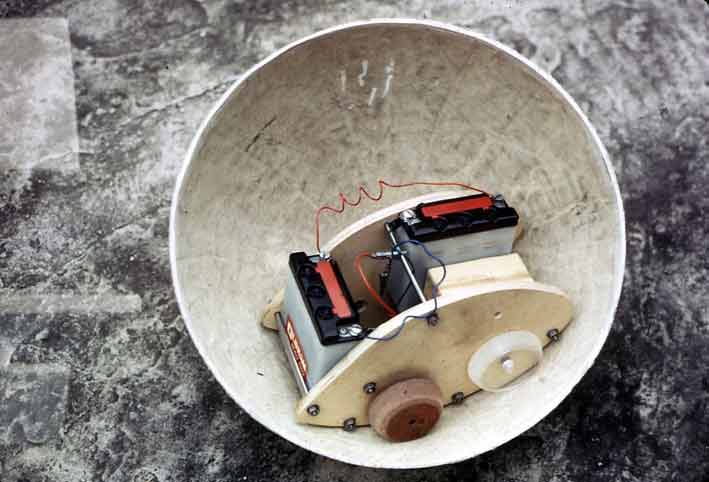
A 'tank' driving one of the mirrored spheres.
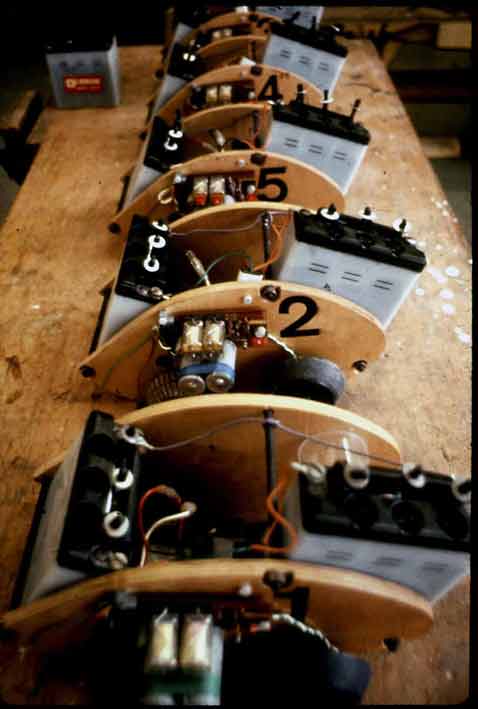
An array of the ‘tanks’, ready to be placed inside the spheres to drive them around the maze. Mixed materials.

The baffling visual environment, made of PVC and mirrored Mylar film.
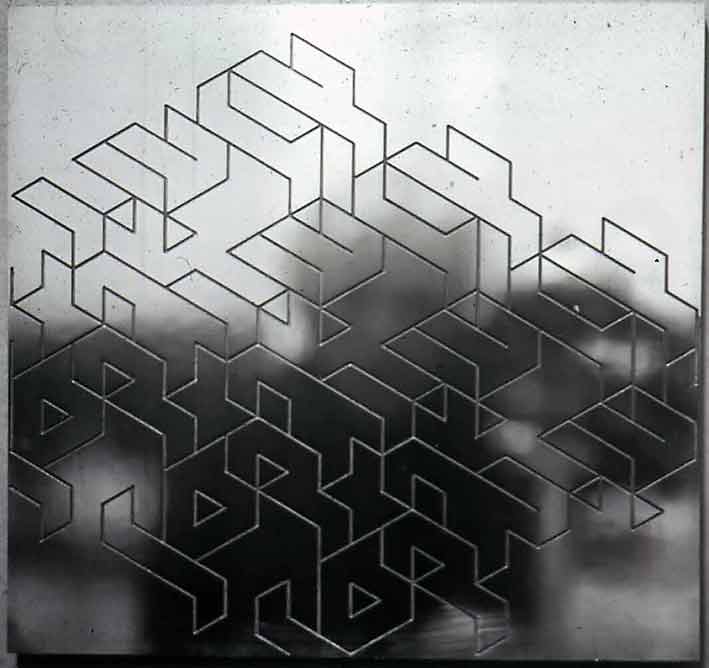
Metal master from which deeply embossed white PVC poster was produced.
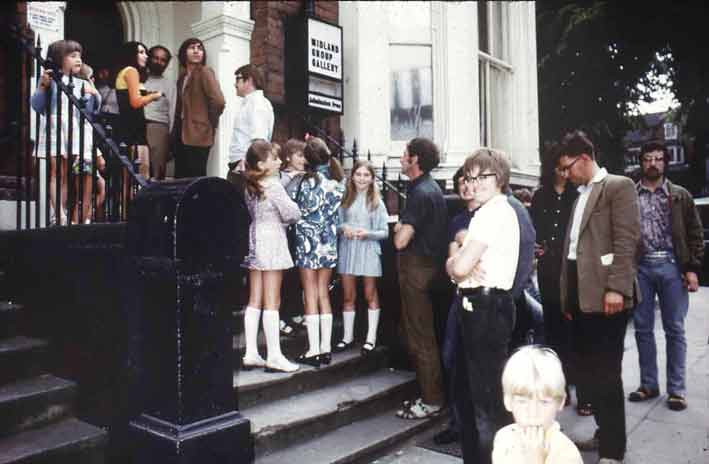
Visitors queuing at the entrance to the Midland Group Gallery to book entrance to the Labyrinth experience.
Rover, 1971-72
A research project conceived jointly with Ernest Edmonds as an electromechanical test bed for studying the psychology of art and interaction. The project required development funding, but it was to be another 33 years before the establishment of the Arts and Humanities Research Council. Efforts were made to engineer Rover using a WWII lathe and other equipment made available by the Engineering Department of Leicester Polytechnic (later De Montfort University), with modest funding from the Arts Council of Great Britain and some interest on the part of the British Army.

Drawn artwork for publicity leaflet advertising tour (using military command vehicles to house Rover test beds and admit members of the public).

Full scale elevation of sphere and drive wheels. Drawing in ink on tracing paper.
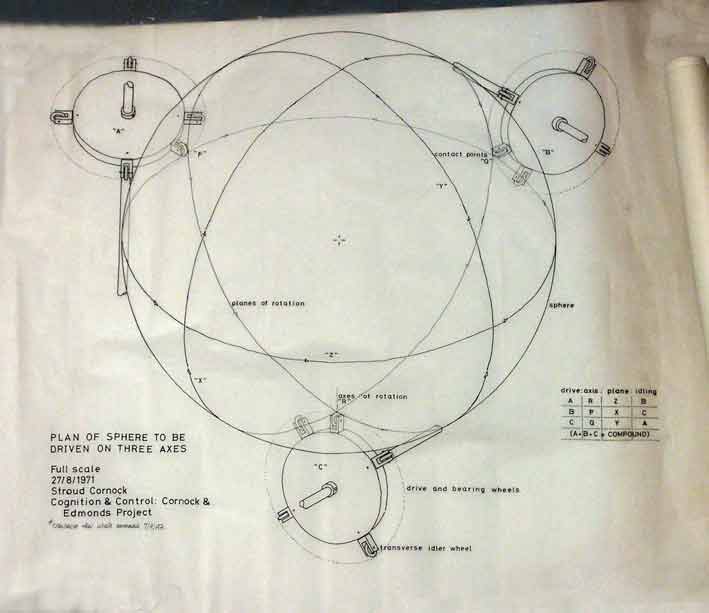
Full scale plan of sphere, drive wheels and some of the transverse idler wheels. Ink on tracing paper.

Full scale elevation of sub-assembly. Ink on tracing paper.
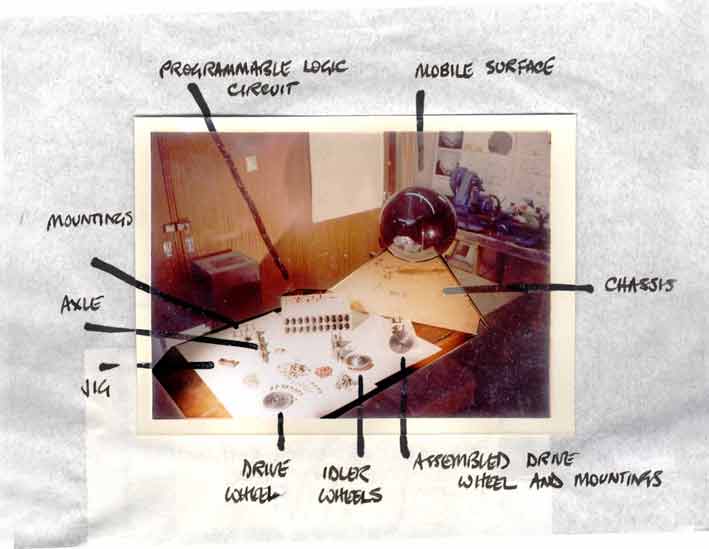
Annotated photograph of a workshop in the Media Handling Area of Leicester Polytechnic (later De Montfort University) in which engineering parts were being assembled.